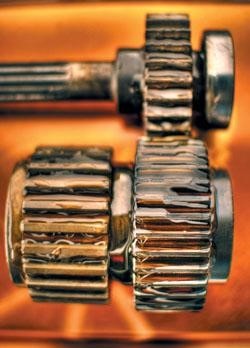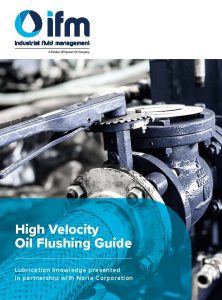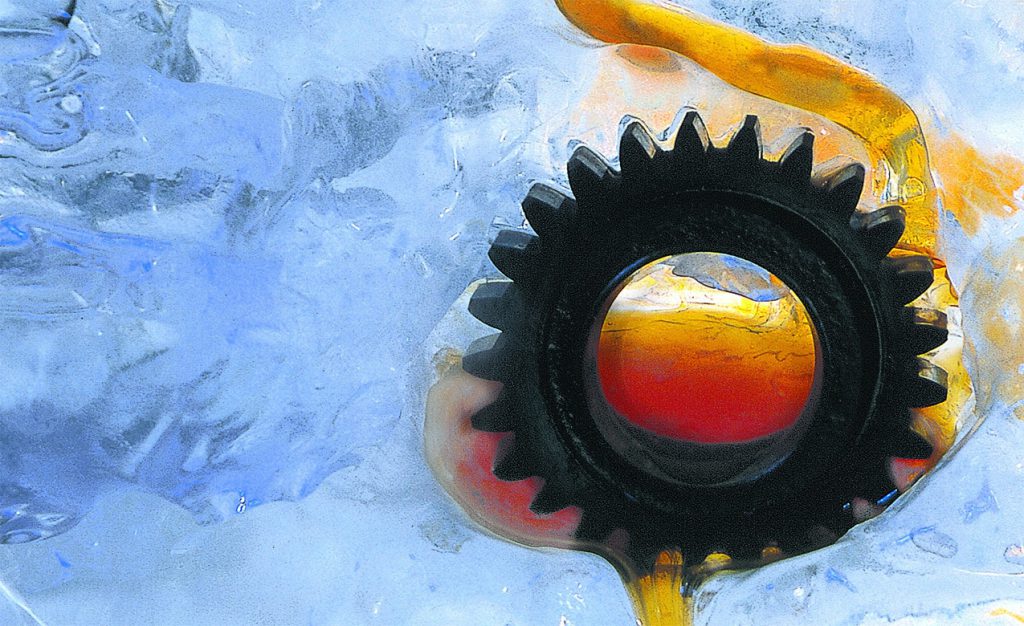Gear oil, like other lubricants, faces many issues that threaten its lifespan. Overheating and contamination are common, and both can increase the rate of oil oxidation. For gear lubricants, oxidation is a constant threat and can be the catalyst for other more significant problems; for example, the products of oxidation can strip additives from an oil and increase varnish formation on machine surfaces.
A machine’s environment also plays heavily into the oil lifespan. High temperatures can facilitate faster oil degradation, and dirty working conditions offer opportunities for particle contaminants to enter the oil. Water contamination is another issue that threatens an oil and, upon discovery, must be dealt with swiftly.
An oil’s performance degrades as the oil degrades, and keeping oil (and the gear box) clean should be a top priority in any maintenance program.
How long Does Gear Oil Last?
Gear oil lifespans differ based on the application and the machine’s environment. Typically, gear box oil is replaced on a fixed schedule (quarterly, semi-annually, annually, etc.).
When gear box oil is drained, some five to fifteen percent of the old oil remains in the machine. This oil contains all the same particles and contaminants as the drained oil, and if it is not removed before new oil is added, the new oil will become instantly contaminated. Oil flushing should be done after the old oil is drained and before the new oil is applied.
An oil flush will remove the remaining old oil and will also clear out any remaining contamination, such as varnish and rust. Additionally, before it is added to the machine, the new oil should be filtered and tested to confirm cleanliness. New oil is not always clean, and failing to filter it can introduce contamination into the (now) clean gear box.
Monitor the Gear Oil
Reliability and performance are bolstered by oil analysis. A key predictive maintenance tool, oil analysis can identify incipient problems allowing for preventative action to be taken before failure-related symptoms occur.
By monitoring the gear oil’s health, oil analysis can confirm that an oil has proper viscosity, film strength, corrosion control, demulsibility, and chemical stability, all of which must be maintained to maximize the oil’s lifespan.
The Tests
A standard slate gear oil analysis should include testing for:
- Viscosity
- Moisture
- Elemental Analysis
- Particle Count
- Ferrous Density
- Oxidation
- Acid Number
If an oil or machine failure is in progress, exception testing should be performed, such as:
- Analytical Ferrography
- Extreme-Pressure Tests
- Fourier Transform Infrared (FTIR) Spectroscopy Oil Characterization
Other various testing methods can also be implemented into oil analysis, depending on the type of gear box and the method of lubrication. The oil analysis laboratory can provide information on the types of tests and the battery of tests recommended for your specific operations.

Seals
A machine’s mechanical seals are usually some of its most integral components and must be considered when oil dealing with the system’s oil. Seal failures can result in leaking, excessive contamination, and machine downtime.
Internal and external contamination can cause seal damage. Oil analysis reports that indicate high particle counts are cause for alarm in regard to seals, as the same particles that damage machine walls and components can also damage, and even destroy, seals.
Conclusion
A gear oil’s lifespan and performance can be significantly improved by implementing best practice maintenance techniques. Oil cleanliness is imperative. To ensure oil stays clean, machines and components should be flushed between oil changes, and oil analysis should be a regular part of the maintenance program.
Free Whitepaper Download

